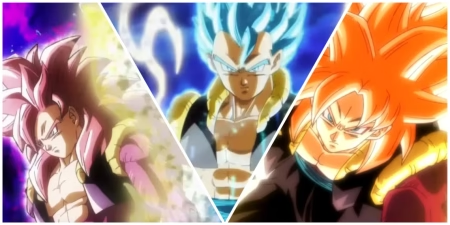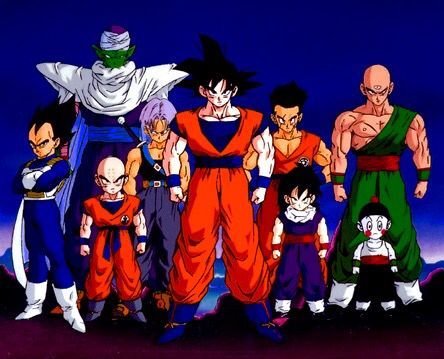Dragon Ball Z Power Levels, Explained
- 11-Mar-2024, 16:29
- 0 Comments
- 13 views

The concept of power levels in Dragon Ball was first introduced during the Frieza Saga in Dragon Ball Z. Power levels were initially depicted as numerical values that represented a character's overall strength and fighting prowess. These levels were measured using scouters, devices worn by characters like Frieza's soldiers to assess their opponents' power levels.
The use of power levels quickly became a significant aspect of battles in the Dragon Ball universe, as characters would often rely on them to gauge their opponents' strength and determine their own chances of victory. The concept added an element of strategy to the fights, as characters would use their knowledge of power levels to devise tactics and plan their attacks accordingly.
However, power levels also became a source of controversy and criticism within the Dragon Ball fan community. Some fans felt that the concept of power levels oversimplified the battles and detracted from the series' focus on martial arts and strategy. Additionally, inconsistencies in power scaling and discrepancies between power levels and actual combat abilities led to confusion and frustration among fans.
As the series progressed, power levels became less prominent, and the focus shifted towards other aspects of combat, such as techniques, transformations, and character development. While power levels are still occasionally mentioned in Dragon Ball, they no longer play as central a role in the narrative as they did during the early arcs of Dragon Ball Z.
Despite their diminishing importance, power levels remain a significant aspect of Dragon Ball's lore and history, serving as a reminder of the series' evolution and the changes it has undergone over the years.
The concept of power levels in Dragon Ball, whether referred to as "ki" or "Power Level," is deeply intertwined with the Saiyan race, one of the central elements of the series. Saiyans are known for their exceptional combat abilities and their innate potential to increase their power levels through intense training and combat experiences.
Saiyans have a natural affinity for combat and possess high baseline power levels compared to other races in the Dragon Ball universe. This innate strength, combined with their Saiyan biology, allows them to rapidly increase their power levels through intense training, battles, and even near-death experiences, a phenomenon known as the Saiyan Power.
The Saiyan Power is a unique trait of the Saiyan race, where they become significantly stronger after recovering from severe injuries. This power boost is a result of their biology adapting to overcome the challenges they face, making them stronger each time they recover from near-death situations.
Additionally, Saiyans have the ability to transform into various states, such as the Super Saiyan forms, which dramatically increase their power levels. These transformations tap into their latent potential and unlock new levels of strength, speed, and energy output, allowing them to surpass their previous limits.
The Saiyan race's connection to power levels is further emphasized by their history of conquest and combat. Saiyans are known for their warrior culture, where strength and combat prowess are highly valued traits. This culture encourages Saiyans to constantly push their limits and strive for greater power, leading to their reputation as formidable warriors in the Dragon Ball universe.
Overall, the concept of power levels is closely tied to the Saiyan race, highlighting their innate strength, potential for growth, and their relentless pursuit of power through training, combat, and transformation.
The importance of power levels in Saiyan society highlights the significance of innate strength and potential within their culture. From birth, a Saiyan's power level dictates their role and status within their society, shaping their destiny and opportunities for advancement.
In the case of Goku, his initially low power level as a baby led him to be perceived as having limited potential, relegating him to a lower social status. This contrasts with his brother Raditz, who possessed a higher power level and consequently enjoyed greater respect and opportunities within Saiyan society.
However, power levels alone do not determine a Saiyan's worth or status entirely. Other factors, such as drive, ambition, and willingness to train and fight, also play a crucial role in determining one's standing among Saiyans. This is exemplified by Tarble, Vegeta's younger brother, who was seen as a failure because of his lack of interest in combat and training, despite his potential power level.
On the other hand, individuals like Broly, who are born with exceptionally high power levels, are perceived as threats to the existing power structure within Saiyan society. Broly's immense power and potential posed a challenge to the established hierarchy, particularly to figures like King Vegeta and Prince Vegeta, who viewed him with suspicion and concern.
Furthermore, Saiyans possess unique abilities such as Saiyan Power, which allows them to regenerate and increase their power levels significantly after near-death experiences. This ability, coupled with their natural propensity for rapid power level growth through training and combat, further underscores the importance of strength and potential within Saiyan culture.
Overall, power levels serve as a fundamental aspect of Saiyan society, shaping individuals' destinies and influencing their status and opportunities within their community. The Saiyan emphasis on strength, potential, and combat prowess reflects the values and norms of their warrior culture.
Base power levels in Dragon Ball refer to the inherent strength and energy levels of characters without any transformations or external enhancements. These power levels serve as a baseline measure of a character's combat capabilities and potential.
For most characters, their base power levels are influenced by various factors, including genetics, training, and natural talent. Saiyans, for example, have inherently high base power levels due to their warrior heritage and physiology, which allows them to achieve impressive strength through rigorous training and combat experience.
Base power levels are significant as they provide a foundation upon which characters can build and improve their abilities. Through intensive training, meditation, and battles, characters can increase their base power levels over time, unlocking new techniques and transformations.
However, base power levels are not fixed and can fluctuate depending on the situation. Factors such as injuries, fatigue, and emotional state can temporarily weaken a character's base power level, while moments of intense focus or determination may allow them to tap into hidden reserves of strength.
In summary, base power levels represent the inherent strength and energy levels of characters in Dragon Ball, serving as a crucial factor in determining their combat prowess and potential for growth.
Power levels in Dragon Ball indeed started as a crucial aspect of the series, providing a quantifiable measure of a character's strength and serving as a plot device to drive the narrative forward. However, as the series progressed and characters achieved increasingly astronomical power levels, the concept became less prominent in the storytelling.
The focus shifted from numerical power levels to more abstract concepts such as transformations, techniques, and the emotional and spiritual growth of characters. Battles became more about strategy, skill, and the determination to protect loved ones rather than simply comparing power levels.
While power levels may no longer play as central a role in the series as they once did, they remain an iconic aspect of Dragon Ball's legacy. They sparked countless debates among fans and contributed to the series' enduring popularity and influence on the shonen genre as a whole. Ultimately, whether a character's power level is 5 or 5 million, what truly matters in Dragon Ball is the heart of the warrior and the bonds they share with their friends and allies.

An anime that spans across many generations, this is the sequel to Dragon Ball from 1986. Dragon Ball Z is an anime that everyone must know of, whether it's the name itself, Goku, or the Saiyans - Dragon Ball Z is one of the greatest anime to have ever been produced. Produced by Toei Animation and written by Akira Toriyama, Dragon Ball Z continues the adventures of Goku, who, along with his companions made in the prequel series, defend the Earth against villains ranging from aliens like Frieza, androids like Cell, and magical creatures like Majin Buu. While the original anime followed Goku from childhood to early adulthood and had its fun moments, Dragon Ball Z is a continuation of his adult life in this hard-action anime, but at the same time parallels the life of his son, Gohan, as well as the development of his rival Vegeta. While there have been sequel series produced afterwards like Dragon Ball GT and Dragon Ball Super, Z is the core of the entire Dragon Ball universe that has a recognition like no other anime on this list. With over 150 episodes, the series has some of the most unique scenes in anime ever made, such as Goku’s transformation to becoming a Super Saiyan and the Cell Games. If you’re into anime and haven’t watched Dragon Ball Z, we won’t judge. However, if you’re just starting, this is an anime that must be seen if you enjoy some fast-paced action, even if some fight scenes last about three to four episodes at a time. It’s gripping, entertaining, and heartbreaking all at the same time, and you wish you could be a Saiyan like Goku and his friends too.